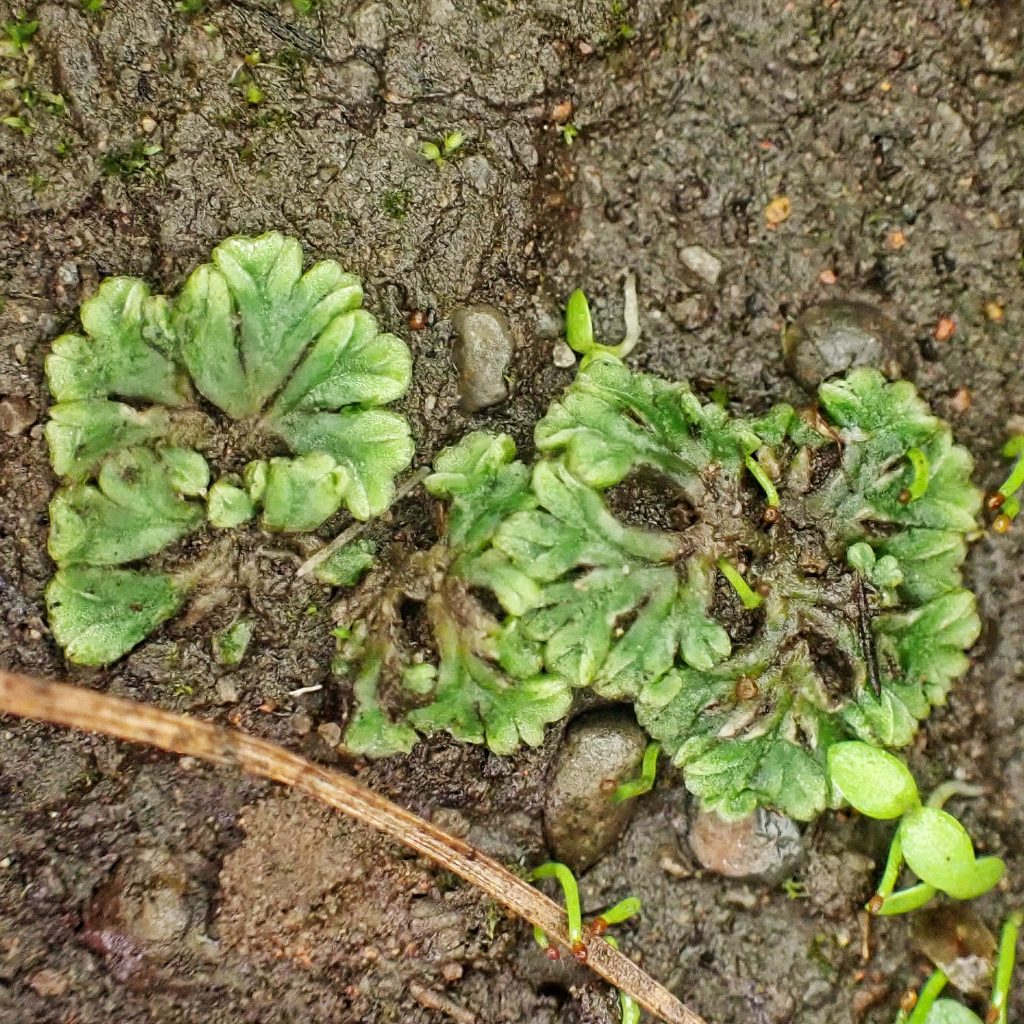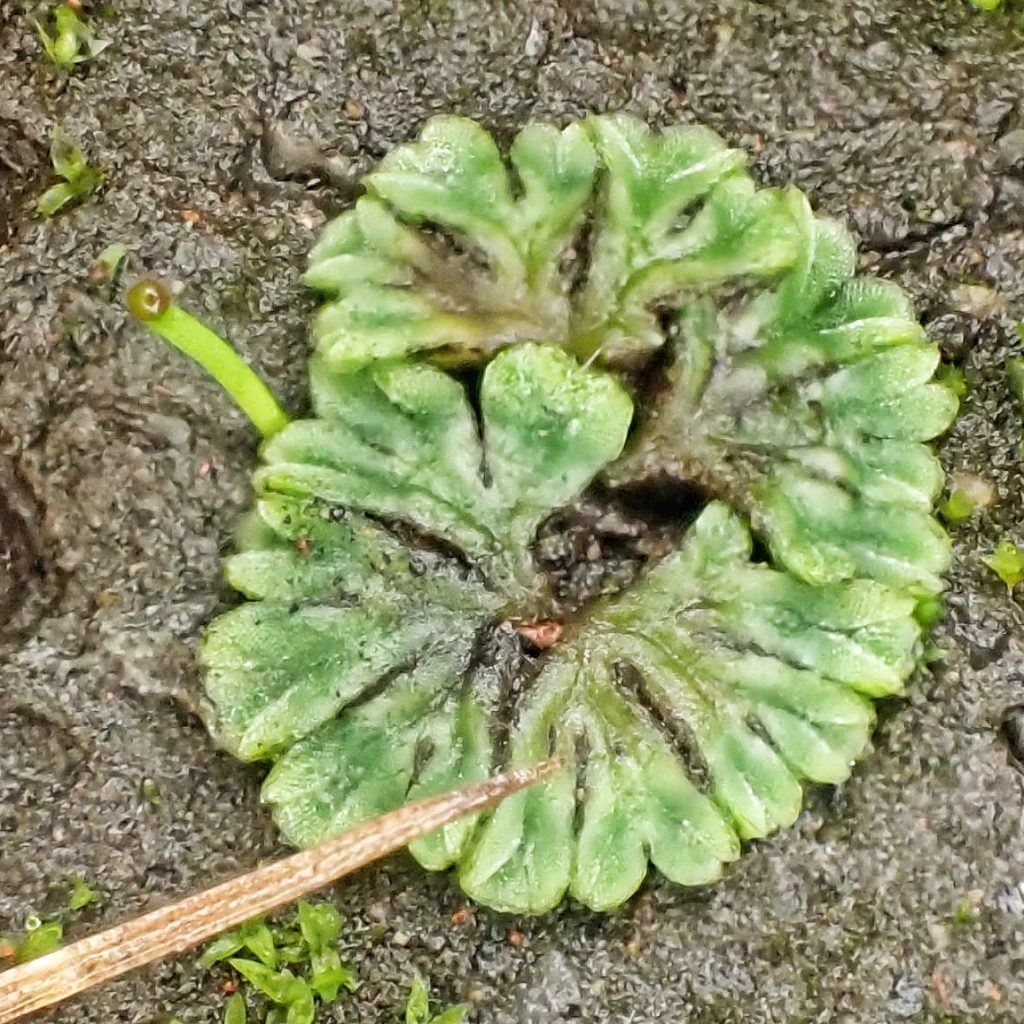
The first cool find of the first major expedition of my retirement came at my friends Sue and Michael Palmer’s land, in the area that was severely burned by the Blue River fire of 2020. The liverwort Riccia sporocarpa (sometimes called by the common names common crystalwort and chalk crystalwort) is apparently the most common Riccia spp. in our area, but, undoubtedly due to poor observational effort on my part, I had never seen it before. Until I found these little (I doubt any of them were over a half inch in diameter) rosettes whilst searching for invertebrates in the dark with a headlamp, the spotlight effect of which helped bring them to my attention. I thought maybe they were a Riccia (more a stab in the dark than an educated guess), but the couple books I had with me that dealt with liverworts at all didn’t cover that genus. However I did have some internet access, and Riccia sorocarpa seemed a good fit, so I sent some photos to my liverwort guru David Wagner, who graciously confirmed my supposition.
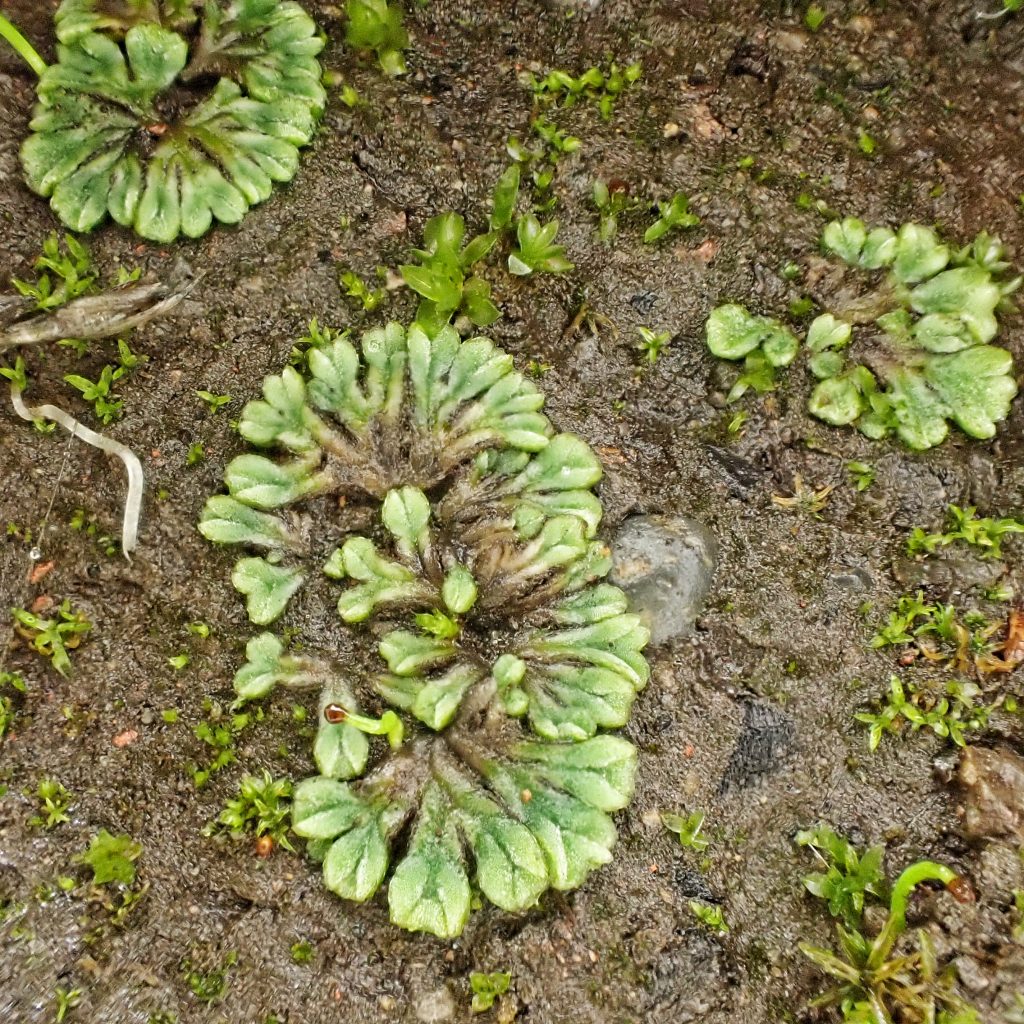
I can’t find much information that is specific to this species, but it appears to be native to the whole temperate Northern Hemisphere. I also can’t tell whether it gets crowded out by encroaching vegetation or just covered over, but it seems to be most readily found in relatively bare, often mineral soils. Its presence at Mike&Sue’s implies to me that it is a pioneer species in burned areas. Riccia spp. have a very simple sporocarp with only a capsule and no stalk, and it is not capable of photosynthesis. The sporocarp is buried in the thallus and is not exposed until the thallus disintegrates.
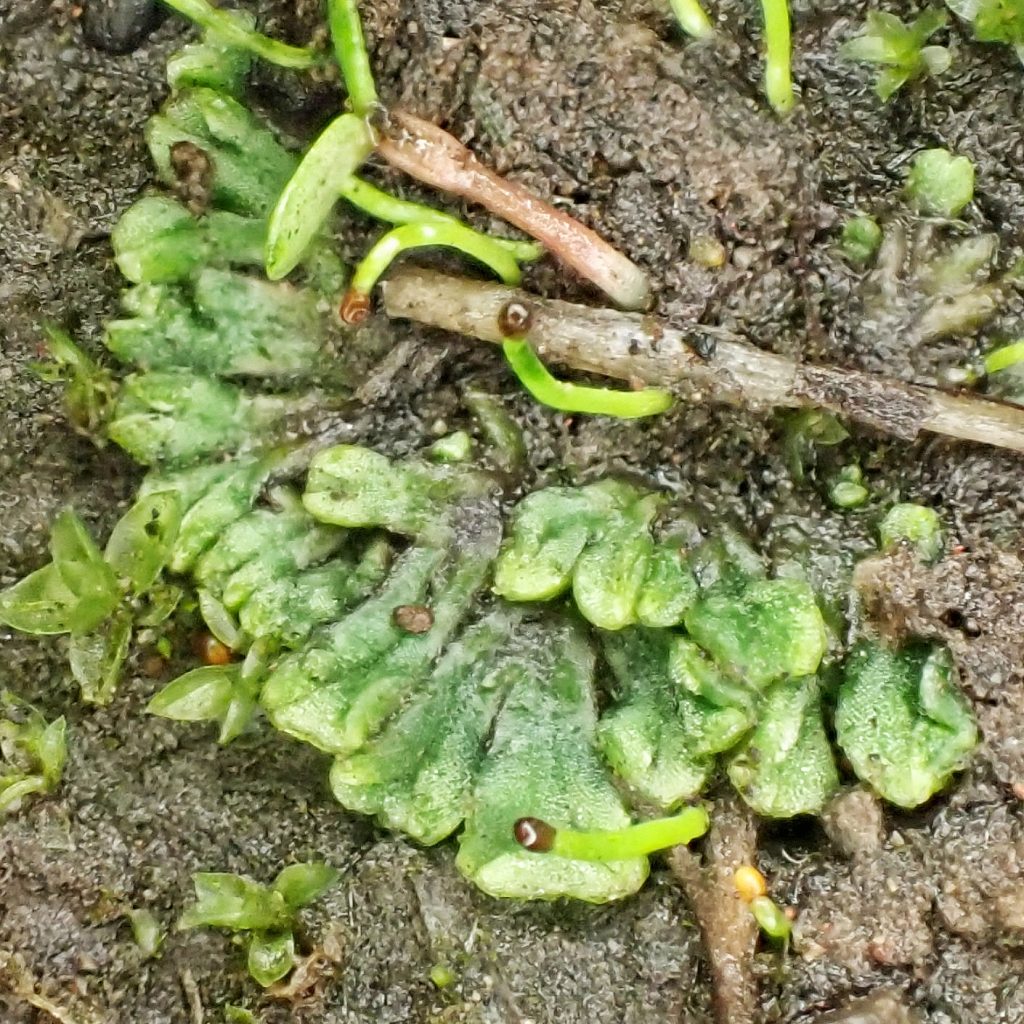
Description-Small (usually less than 20mm in diameter) rosettes with a green thallus that has a deep groove in the center and no cilia on the margins; dorsal surface smooth; ventral surface green.
Similar species– Riccia beyrichiana, R. trichocarpa, and R. californica have marginal cilia or spines; R. nigrella have black ventral scales; R. glauca lack dorsal groove except at tip; R. cavernosa, R. frostii, and R. crystalina have a dorsal surface that looks like a sponge, and often has divots and holes.
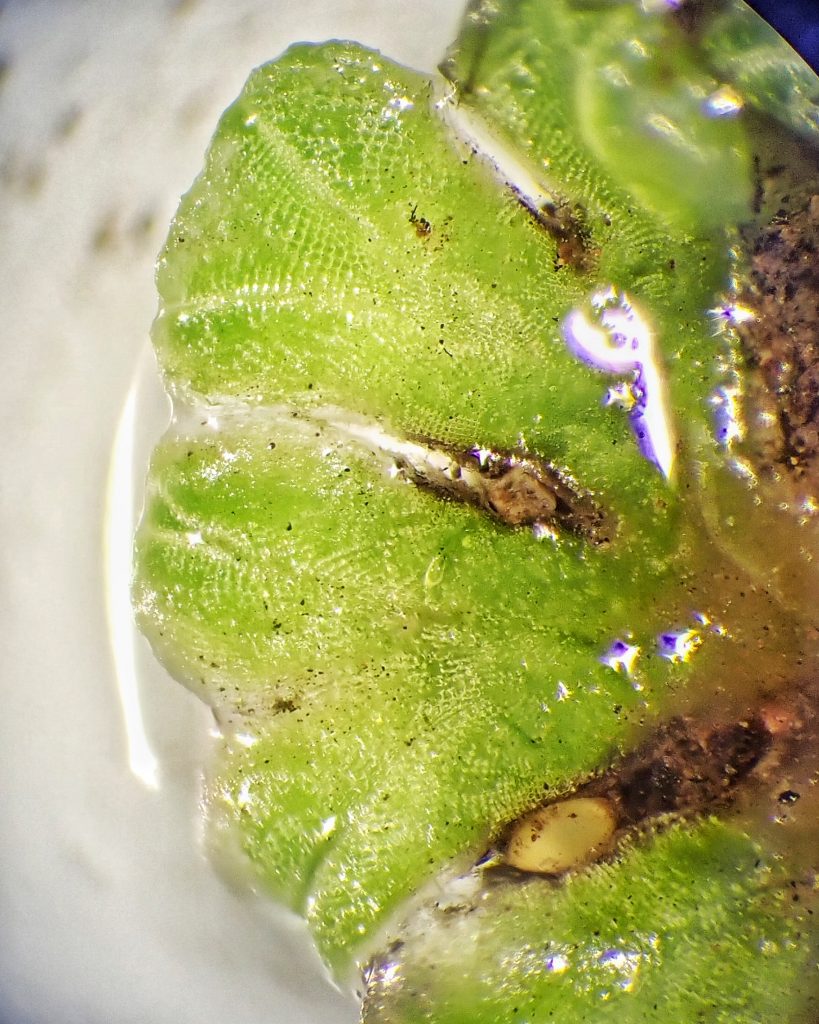
Habitat-Found on soil, often bare, sometimes mineral; in disturbed ground, fields, roads, paths, river and lake shores, at low to mid-elevations; apparently more common in drier areas.
Range-Throughout the temperate areas of the northern hemisphere; region wide in appropriate habitat
Reproductive timing-Sporophytes are common in the spring
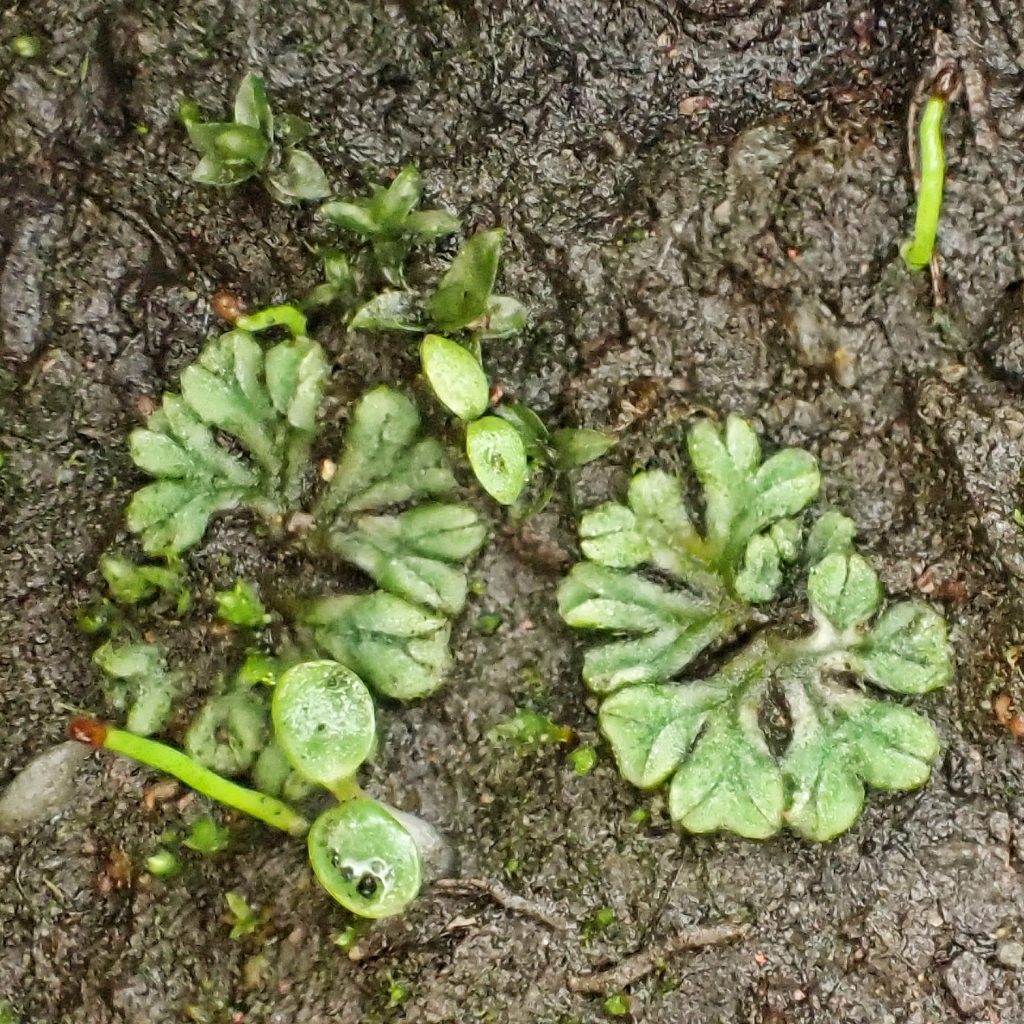
Eaten by-Pygmy grasshoppers in the genus Tetrix, as well as some other members of the subfamily Tetriginae; it is likely used by the larvae of some fungus gnats and some leaf mining flies.
Etymology of names–Riccia honors PF Ricci, an ameteur botanist and politician in 18th century Florence, Italy. The specific epithet sorocarpa may be from the Greek words for ‘heap’ and ‘fruits’, which indicates it probably refers to the sporophyte, but I cannot verify any of this.
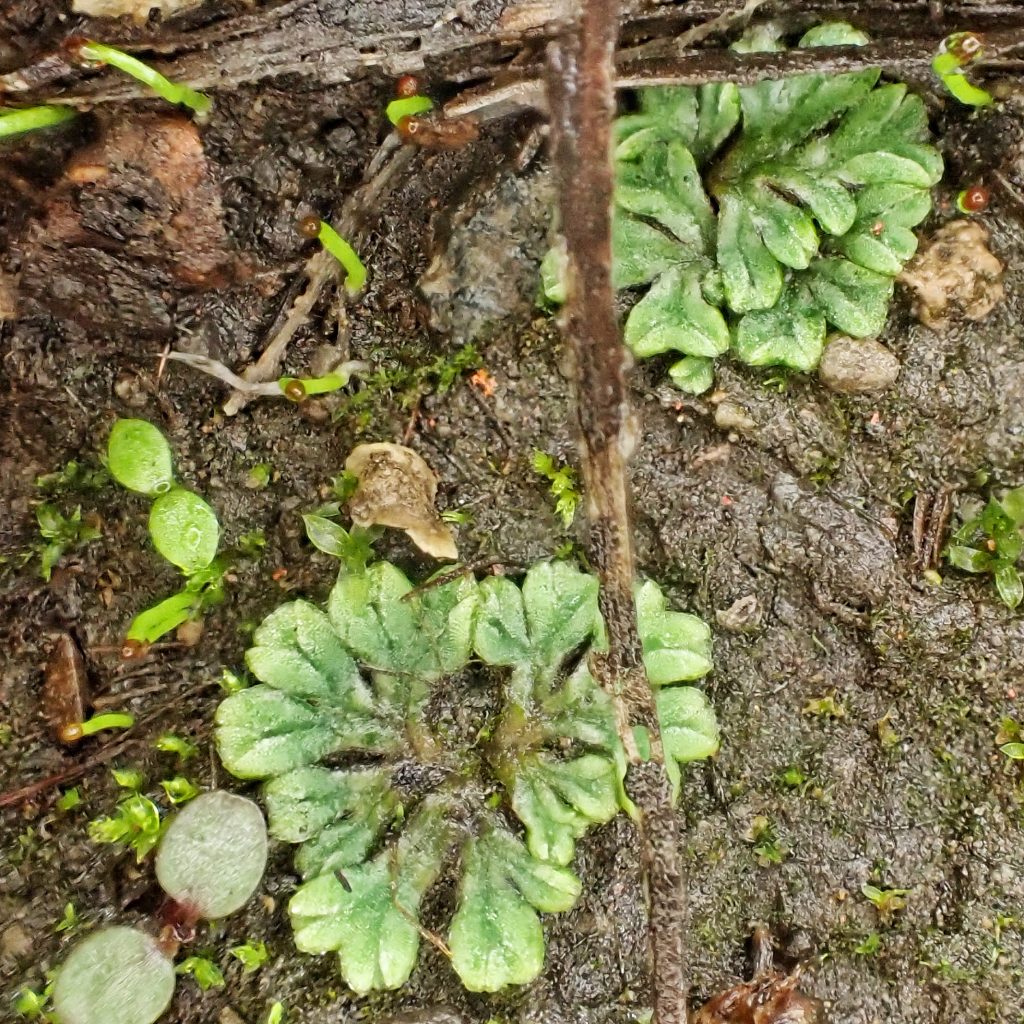
https://www.britishbryologicalsociety.org.uk/wp-content/uploads/2020/12/Riccia-sorocarpa.pdf
https://wnmu.edu/academic/nspages/gilaflora/riccia_sorocarpa.html
